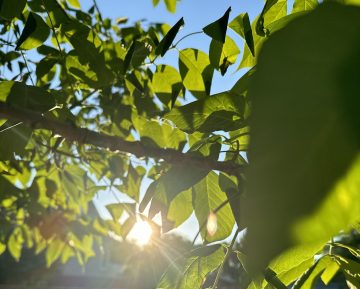At your first session, we assess your history, the unique nature of your pain, and investigate what factors in your life may be contributing to the pain.
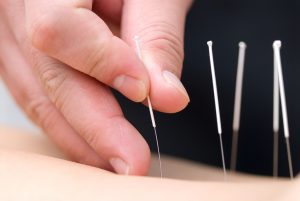
Ultimately, it is acupuncture’s ability to promote normal joint movement that speeds the healing and enables more rehabilitative exercising. This can be very complementary to physiotherapy or just natural increases in function that occur as normal activities are resumed as the joint heals during the period of treatment.
After a comprehensive assessment and taking the history of the problem, we use advanced techniques to make improvements which may include electro-acupuncture, infrared (cold) laser, manual manipulation, gua sha (connective tissue manipulation with a spoon), cupping, athletic taping (K-taping), and recommendations for exercises and things to avoid after treatment.
Shoulder Problems (arthritis, tendinitis, frozen shoulder)
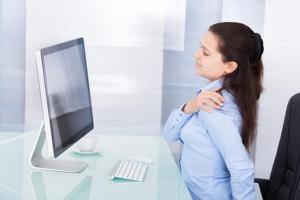
Patients often come in to see us who have been diagnosed with a “rotator cuff” injury. There are actually 4 different muscles of the rotator cuff group, along with other related muscles of the shoulder that support and compensate for such an injury. During treatment, we assess and treat all of the muscles involved in shoulder function so that the most rapid recovery happens in response to improved movement patterns. Read more about shoulder pain.
Tennis/Golfer’s Elbow (lateral/medial epicondylitis)
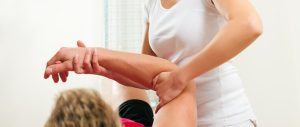
We have noticed that rapid improvement often occurs with strategic treatment of the forearm muscles using electroacupuncture and infrared (cold) laser at the tendon insertions at the elbow to reduce inflammation there. Often the shoulder of the affected side is also treated if it is involved in compensating or improper function. Read more about tennis elbow
Carpal Tunnel Syndrome

Carpal tunnel syndrome is caused by repetitive wrist or finger flexion movements like using a hammer, or can even be brought on by excessive typing or mouse use. It can be progressive and very debilitating, resulting in inflammation and scar tissue buildup in the flexor tendons at the wrist. The medical system treats an established problem like this with anti-inflammatory drugs, steroid injections, and eventually surgery.
Carpal tunnel syndrome is an impingement syndrome, where pressure builds up in the carpal tunnel itself to affect the median nerve running through this passage. The result is numbness and tingling in the thumb and index, middle, and inside of the fourth finger. Sometimes numbness in the fingers can be caused by shoulder issues (thoracic outlet syndrome) or neck issues (nerve root irritation). These hand issues are treated not at the hand, but at the shoulder and upper back/neck, respectively, where the problem originates.
For carpel tunnel syndrome, acupuncture focuses on the flexor muscles of the forearm to relax them, and infrared (cold) laser focuses on the inflamed tendon sheaths of the carpel region. Avoiding or modifying the repetitive movements that caused the problem is necessary, along with a course of acupuncture treatments to see improvement. Judicious use of wrist braces can be very helpful too. Read more about carpal tunnel syndrome:
Hip Pain (muscle or joint arthritis)
The “hip” is generally referred to as the whole buttocks (gluteal) area, and not necessarily the joint of the leg (femur) to the pelvis. In the case of gluteal muscle pain, many conditions can benefit from electroacupuncture to reset the muscle function and restore proper movement, including over-training injuries. When the actual joint itself is involved (usually arthritis), acupuncture treats the many muscles that are involved in stabilization and movement of the hip joint. Usually an injury to a single muscle (like the piriformis muscle in piriformis syndrome), is addressed by treating both the muscle affected but also the related hip muscles that are compensating in the injury pattern. Read more about hip pain.
Knee Pain (arthritis & other conditions)
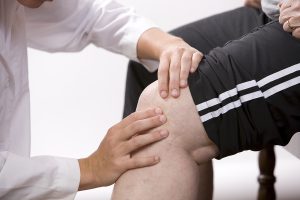
The knee is one of the most stable joints of the body. But when the joint itself gets arthritis or has a cartilage problem, or when there is a ligament injury that destabilizes the joint, pain and immobility can be very significant. Acupuncture is very successful in helping with knee rehabilitation by activating the main muscles that move and stabilize the joint. Read more about Knee Pain
Achilles Tendinitis
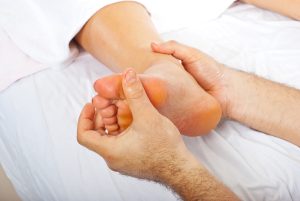
Many people address this issue by stretching the tendon and the calf muscles. While it might feel good in the moment, it may in fact make the problem worse by stretching a tendon attachment injury that needs time to heal first before it is stressed again. The proper approach is to relax and reset the calf muscles with a combination of electro-acupuncture and massage, and also to apply infrared (cold) laser to the affected tendon to reduce inflammation there. Only when the pain is reduced enough so that you are not limping with tenderness should more loading by exercise or stretching occur. Read more about Achilles tendinitis.
Foot Tenderness (Plantar fasciitis)

Plantar fasciitis is inflammation of the fibro-elastic ligament at the bottom of the foot that helps give the foot form and function when walking, running and just standing. It is marked by pain at the bottom of the foot, especially where the ligament attaches to the heel on the inside slightly. After getting out of bed or sitting for a while and then standing it can be very painful initially; the tenderness reduces with walking.
Often people have “fallen” arches and have not developed proper foot structure due to improper footwear, and sometimes too much dependence on orthotics. As with Achilles tendinitis, the plantar fascia should not be stretched if still painful (which a lot of people do!) since this irritates even more the attachment issue of the ligament on the heel. Treatment, like with Achilles tendinitis, focuses on relaxing the calf muscles which directly affect the foot function, and infrared (cold) laser is applied to the tender areas of the fascia ligament. Read more about plantar fasciitis.



